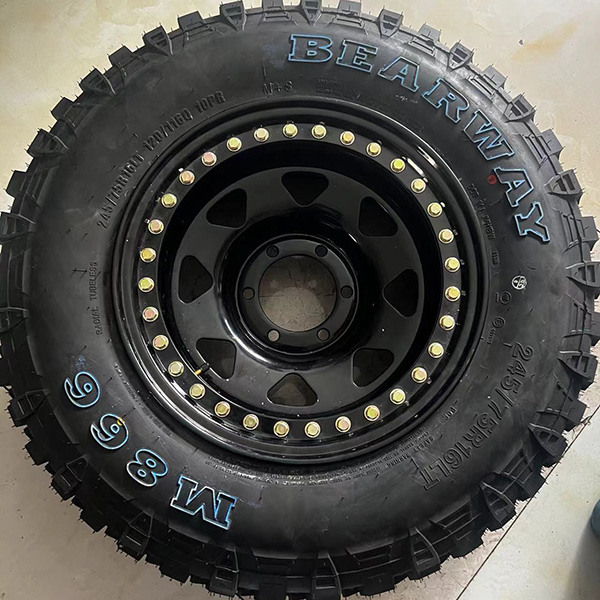
Understanding What TPMS Is
A Tire Pressure Monitoring System (TPMS) is an electronic safety feature designed to monitor air pressure levels inside your vehicle’s tires. It alerts the driver when tire pressure drops below or rises above the recommended level, ensuring safer driving conditions and optimal vehicle performance.


TPMS technology has become astandard safety feature in most modern passenger cars worldwide. It helps prevent accidents caused by underinflated tires, improves fuel efficiency, and extends tire lifespan. Understanding how to use your TPMS effectively can significantly enhance your driving safety and vehicle reliability.
How TPMS Works
There are two primary types of TPMS:Direct TPMS andIndirect TPMS.
1. Direct TPMS uses pressure sensors mounted inside each tire to measure air pressure in real time. The data is sent to the vehicle’s onboard computer, which alerts the driver if any tire pressure is abnormal.
2. Indirect TPMS does not use physical sensors. Instead, it calculates tire pressure indirectly by monitoring wheel speed data from the ABS (Anti-lock Braking System). When a tire’s rotation speed changes due to low pressure, the system triggers a warning light.
While both systems serve the same purpose, direct TPMS is generally more accurate, especially for vehicles that operate under varying loads and temperatures.
Why TPMS Is Essential for Passenger Car Safety
Maintaining proper tire pressure is critical for multiple aspects of driving safety and performance. Here’s why TPMS plays such an important role:
1. Prevents Tire Blowouts: Underinflated tires generate excess heat, increasing the risk of blowouts during high-speed driving.
2. Enhances Fuel Efficiency: Correct tire pressure minimizes rolling resistance, improving fuel economy by up to 3%.
3. Improves Handling and Stability: Properly inflated tires maintain even contact with the road, ensuring optimal traction and braking performance.
4. Extends Tire Lifespan: Balanced air pressure reduces uneven tire wear, helping you save on replacement costs.
5. Increases Overall Safety: TPMS alerts you before pressure drops to dangerous levels, allowing preventive action before failure occurs.
By responding promptly to TPMS alerts, drivers can avoid costly repairs and ensure consistent on-road safety.
How to Use TPMS Effectively for Maximum Safety
To get the most out of your TPMS, follow these best practices:
1. Understand Your Vehicle’s Recommended Tire Pressure:
Always check your vehicle owner’s manual or the tire label (usually located on the driver-side door frame) for the correct PSI values.
2. Respond Immediately to TPMS Warnings:
When the TPMS light appears, don’t ignore it. Check your tire pressures with a reliable gauge and inflate them to the recommended levels as soon as possible.
3. Inspect Tires Regularly:
Even with TPMS, visually inspect your tires every few weeks. Look for cuts, punctures, or sidewall bulges that the system might not detect.
4. Recalibrate After Tire Service:
If you rotate or replace your tires, ensure your TPMS is reset or recalibrated according to the manufacturer’s instructions.
5. Replace TPMS Sensors Periodically:
TPMS sensors have limited battery life (typically 5–10 years). Replace faulty sensors to maintain system accuracy.
6. Avoid Overinflation:
While underinflation is more dangerous, overinflated tires can also reduce grip and increase wear in the center tread.
By consistently following these steps, you ensure that your TPMS continues to deliver reliable safety alerts and optimal performance.


Common TPMS Problems and Solutions
Even though TPMS technology is highly reliable, it can occasionally face issues. Here are common problems and their solutions:
· Warning Light Stays On:
Check all tires, including the spare. A sensor might be damaged or the pressure might still be outside the proper range.
· False Alarms:
Extreme temperature changes can temporarily affect tire pressure readings. Confirm readings manually before servicing.
· Sensor Failure:
If the TPMS doesn’t respond after inflation, a sensor battery might be dead and needs replacement.
· System Reset Needed:
After tire rotation, seasonal changes, or replacement, recalibrate the TPMS according to the manufacturer’s procedure.
Proper maintenance and occasional professional inspection ensure your TPMS functions flawlessly year-round.
The Future of TPMS Technology
Modern TPMS technology is evolving rapidly. Advanced systems now connect wirelessly to smartphones or onboard diagnostic apps, providing real-time pressure, temperature, and even leak alerts. Some high-end vehicles useintelligent TPMS that predicts potential tire failures before they occur, improving road safety even further.
Future TPMS developments will likely integrate withAI-based vehicle monitoring systems, helping drivers make smarter decisions about tire maintenance, driving style, and fuel efficiency.
Conclusion: Make TPMS Your First Line of Defense
A well-functioning TPMS is one of the most effective tools for ensuring passenger car safety. By keeping your tires properly inflated, it helps you save fuel, reduce wear, and prevent dangerous tire failures. Understanding how your TPMS works — and using it proactively — transforms it from a simple alert system into a vital safety companion on every journey.
Meta Description:
Learn how to use Tire Pressure Monitoring Systems (TPMS) effectively for maximum safety in passenger cars. Discover how TPMS improves fuel efficiency, prevents blowouts, and ensures reliable on-road performance.





